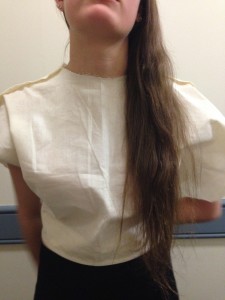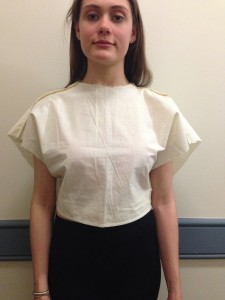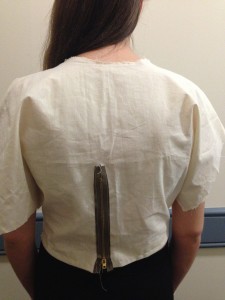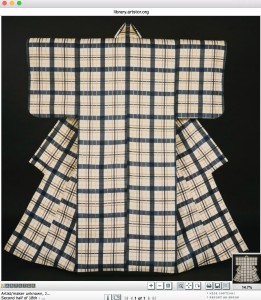Researching Japan in the 19th century for my final project/paper in Studio and Seminar, I have read about the kimono and its significance in geisha’s attire. I have also read about how the kimono was adopted by the West and how it was a garment that wealthy men would wear as a night robe. I have decided to make a few kimono inspired garments that I will dye with indigo and experiment with shibori techniques on. Indigo was commonly used as a dye in Japan for garments. After having read this, I noticed how blue is found in many prints from the 19th century depicting women in kimonos. Shibori is a set of Japanese techniques that were used to create patterns on kimonos and other garments when they were being dyed. For the in class make-a-thon, I made a prototype of one of the garments I plan on making to dye.



